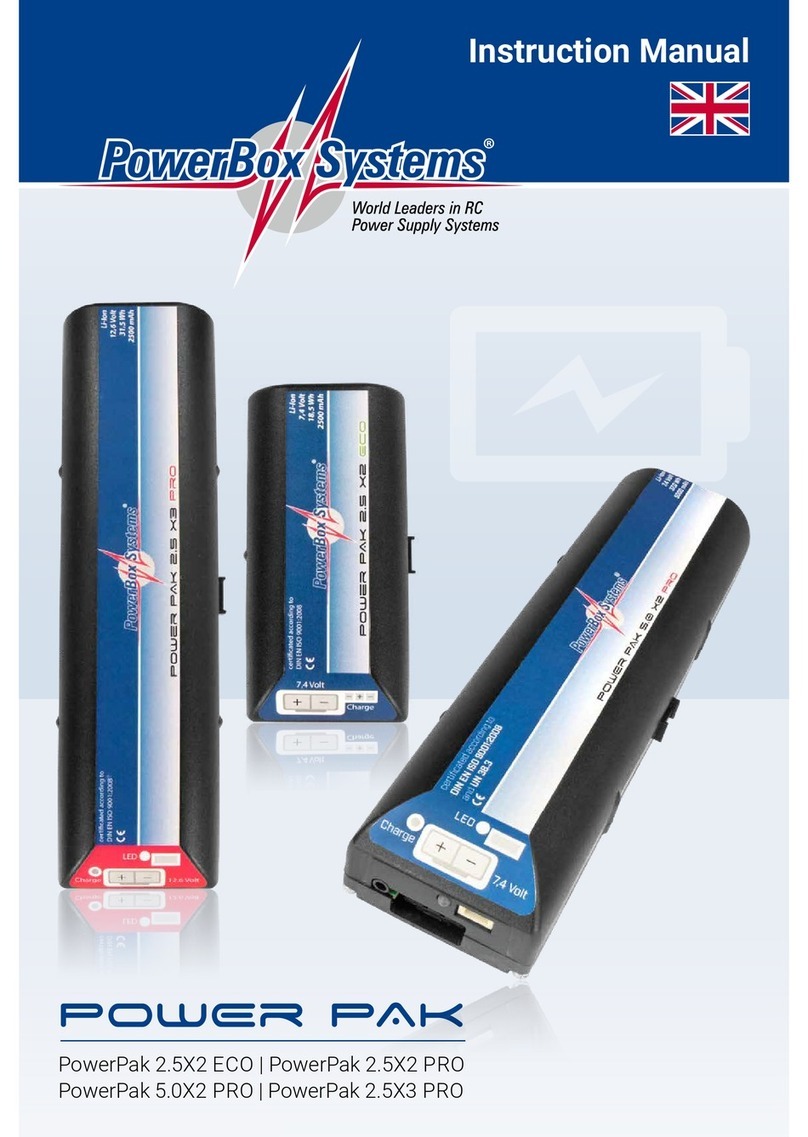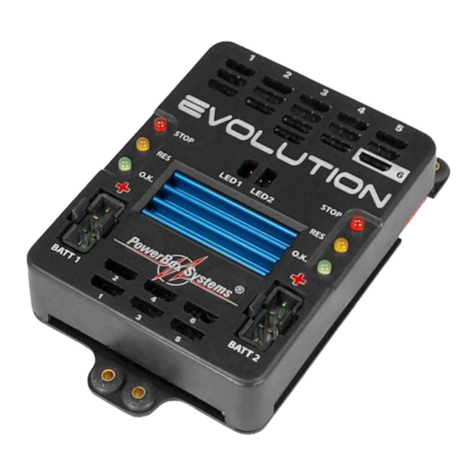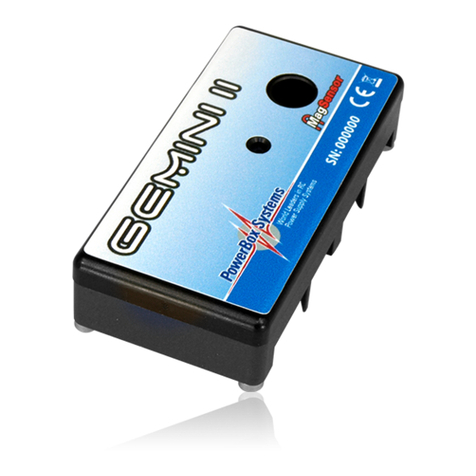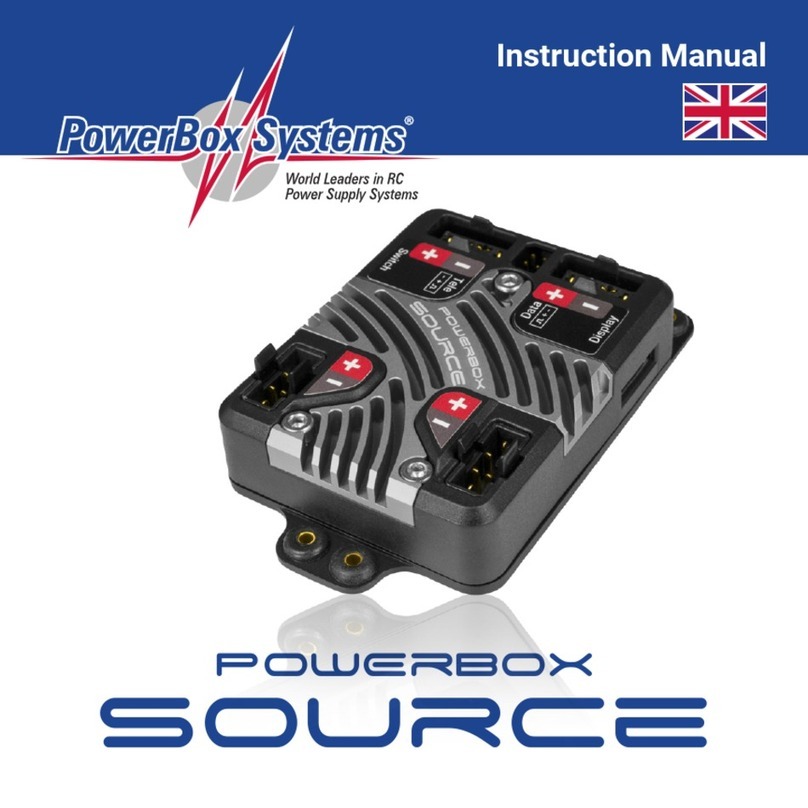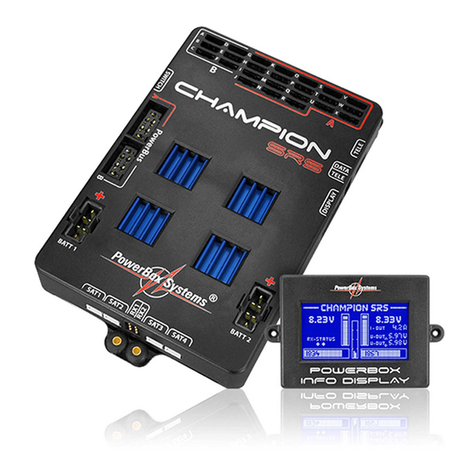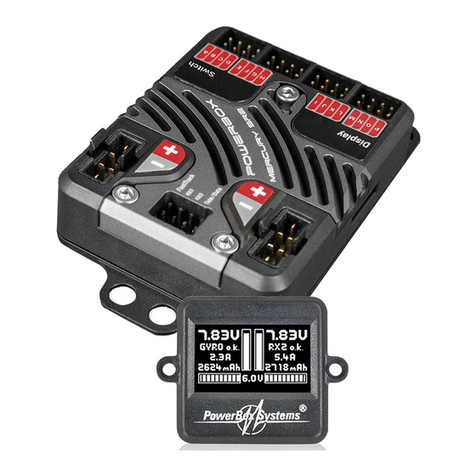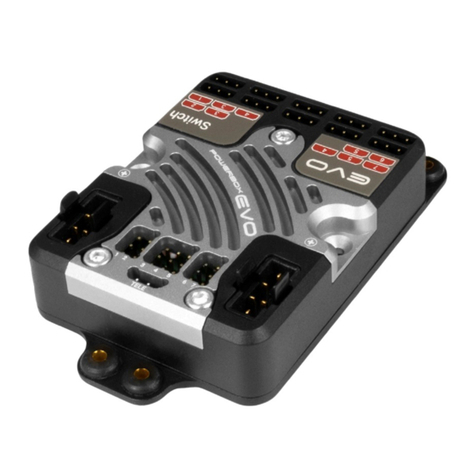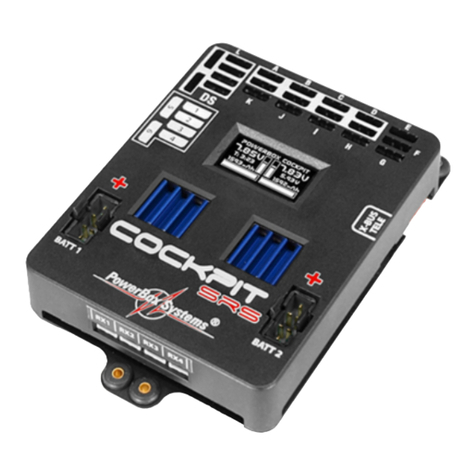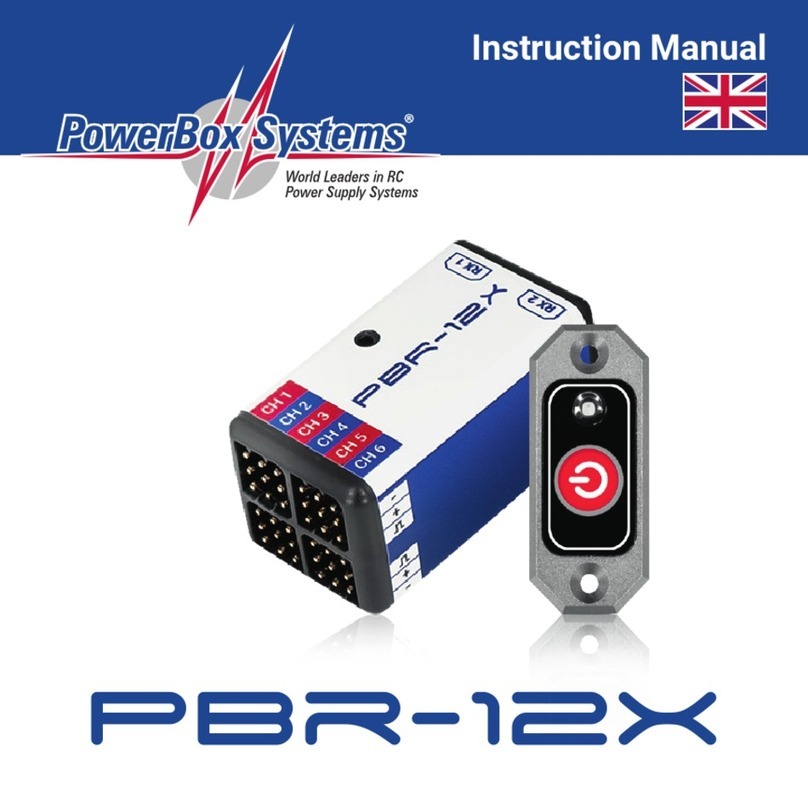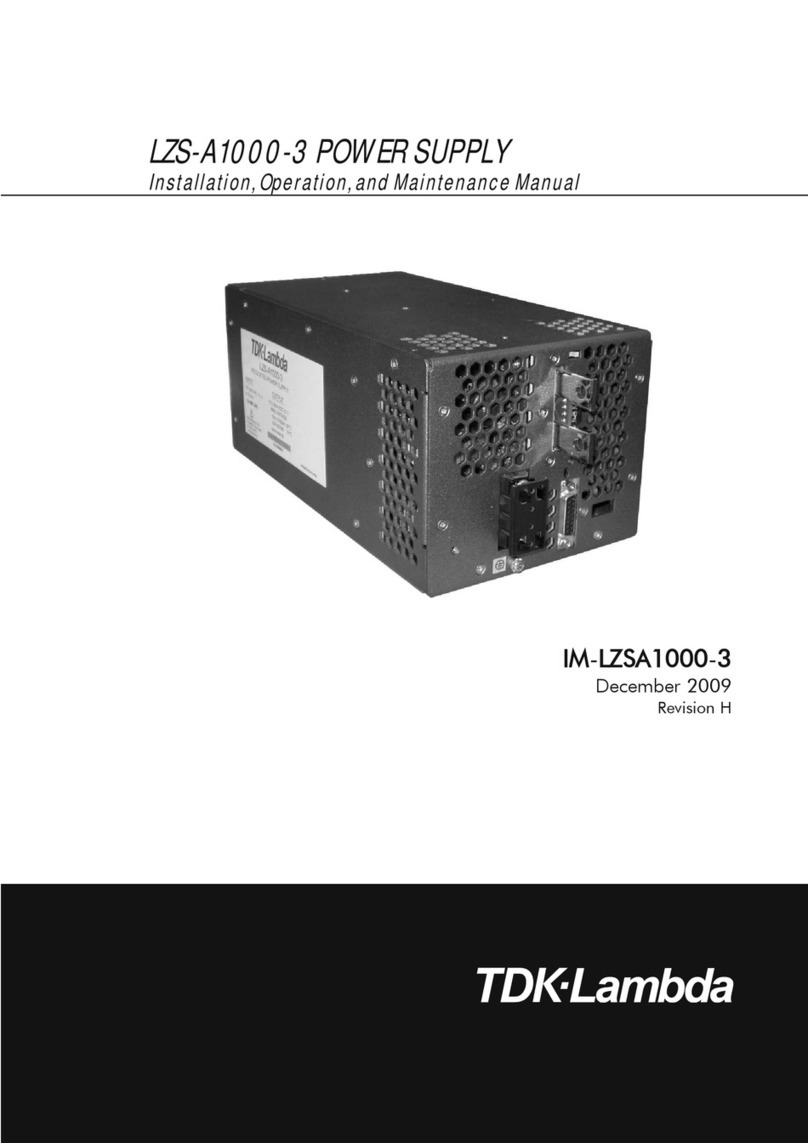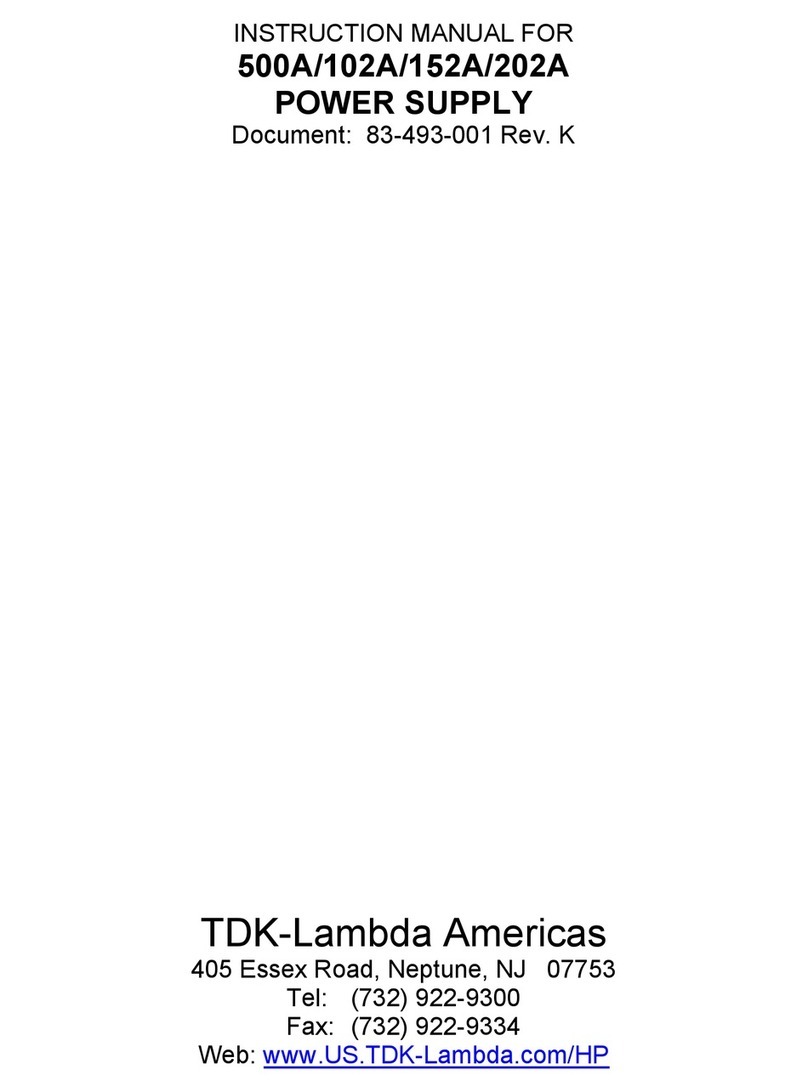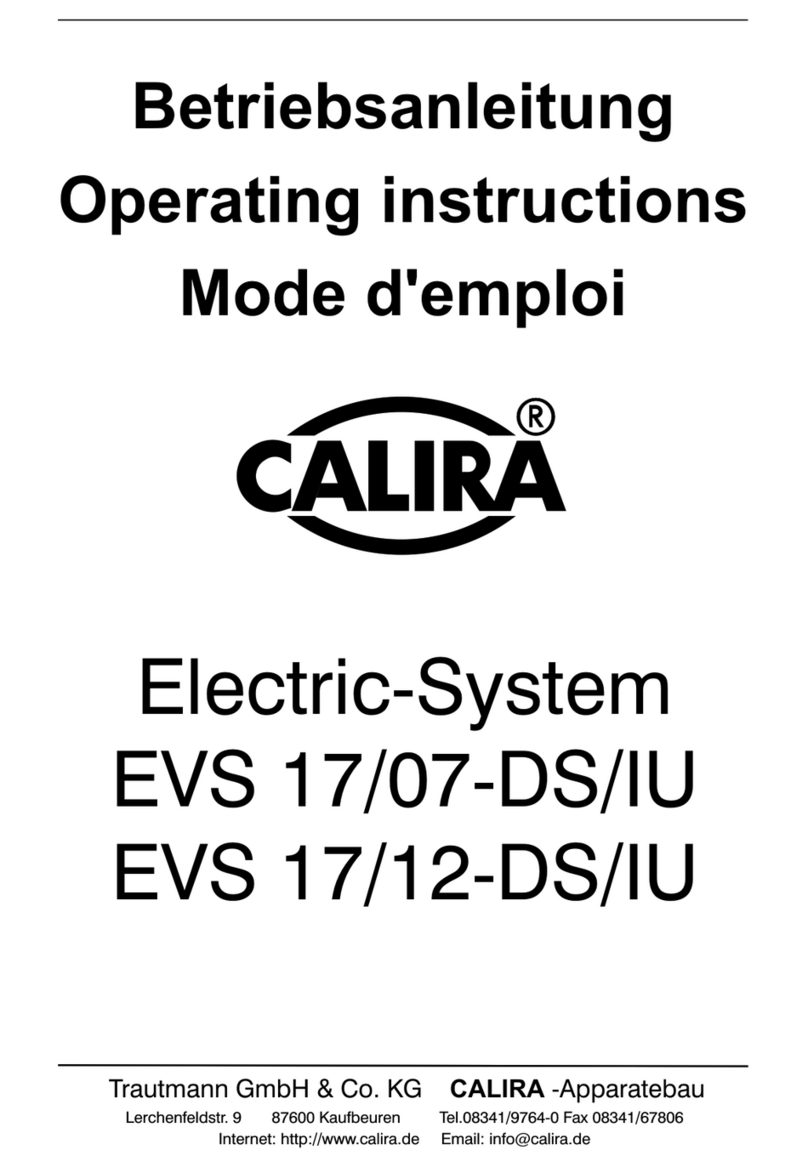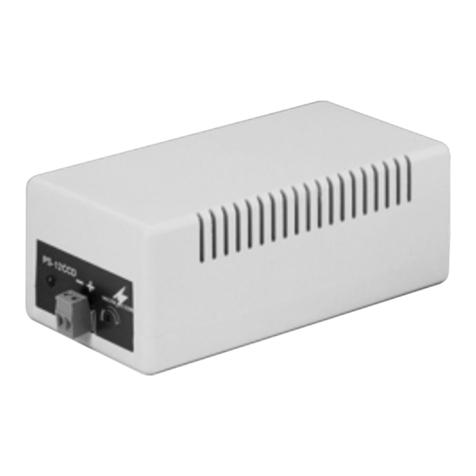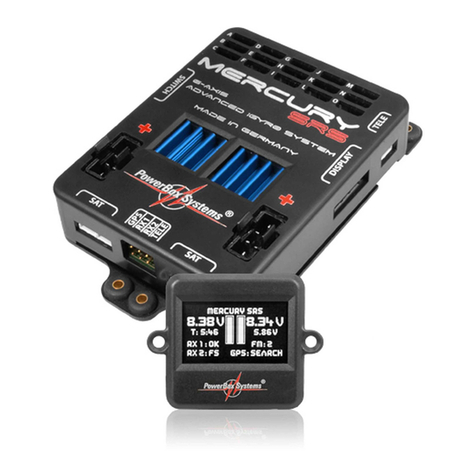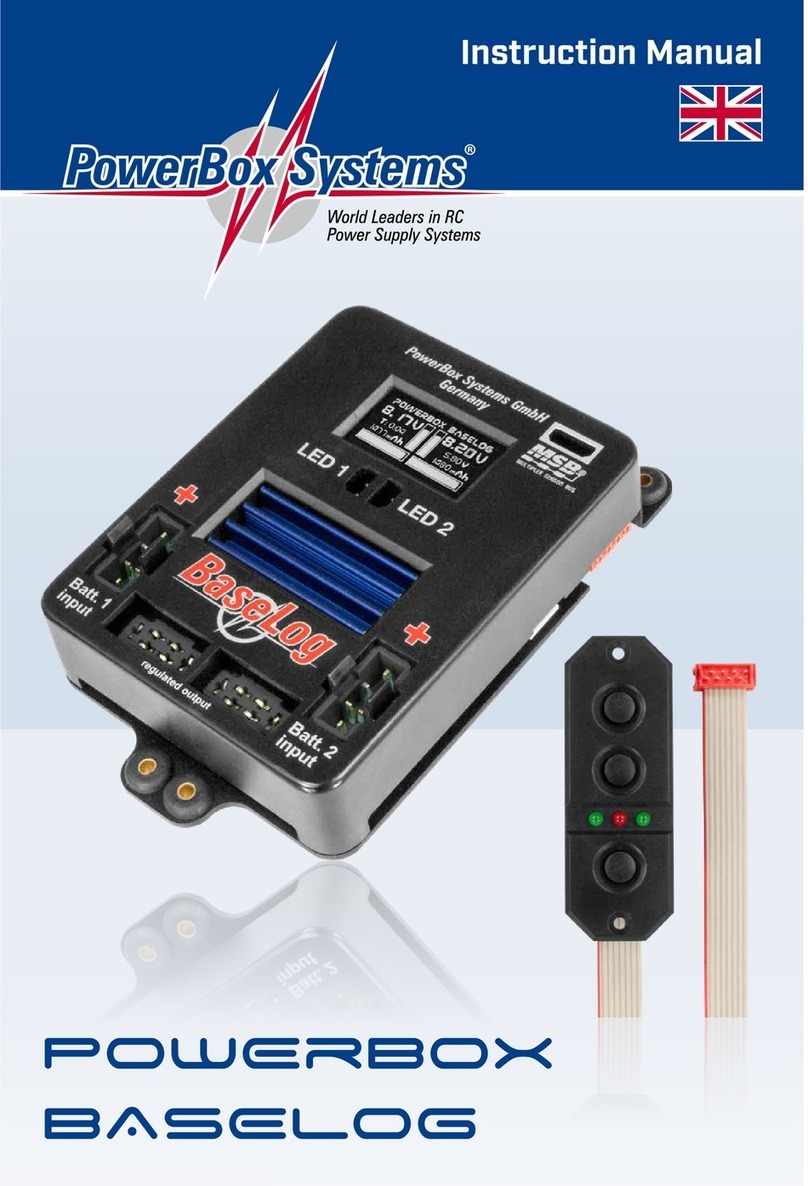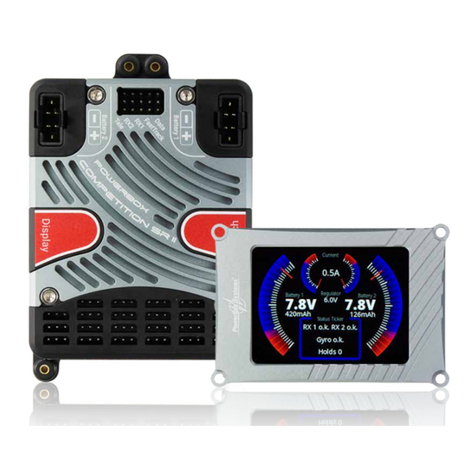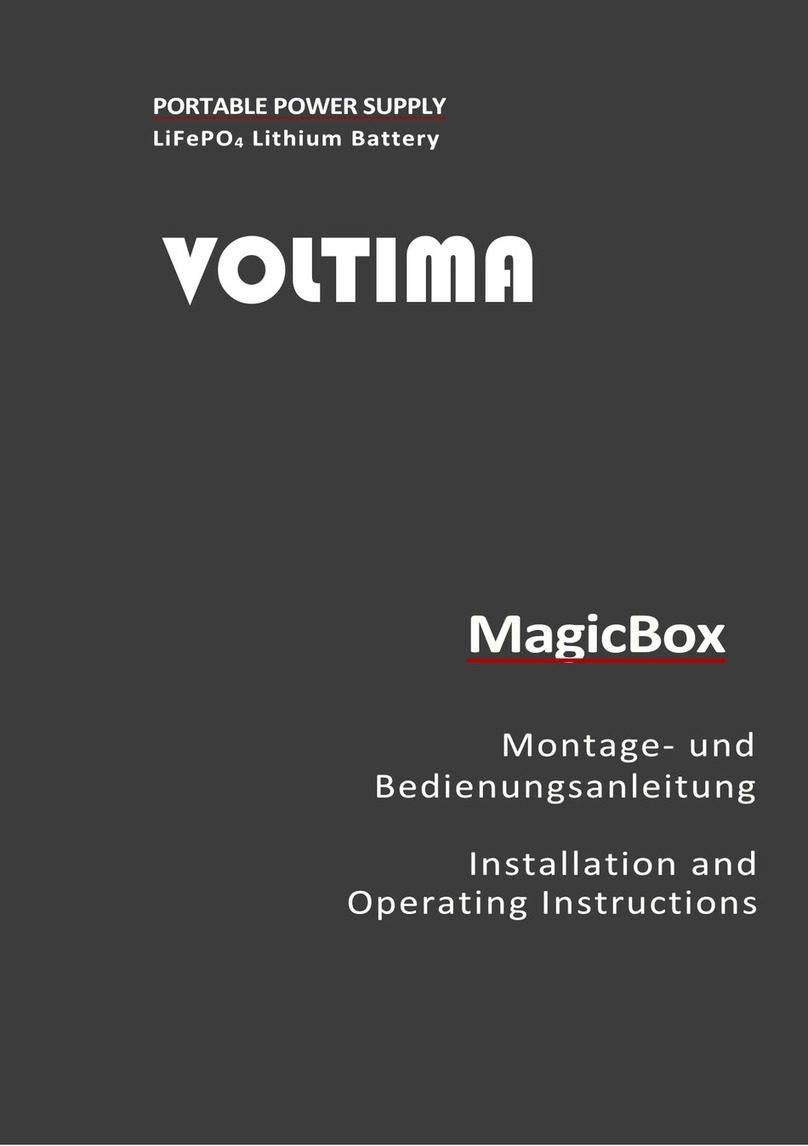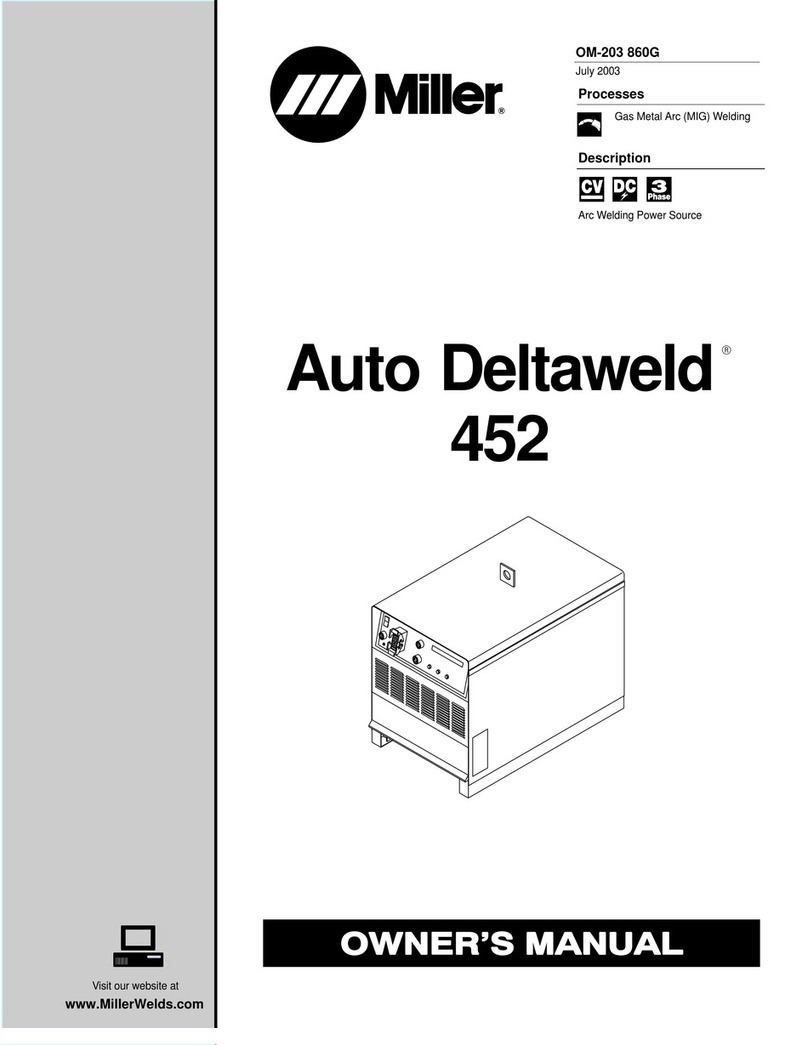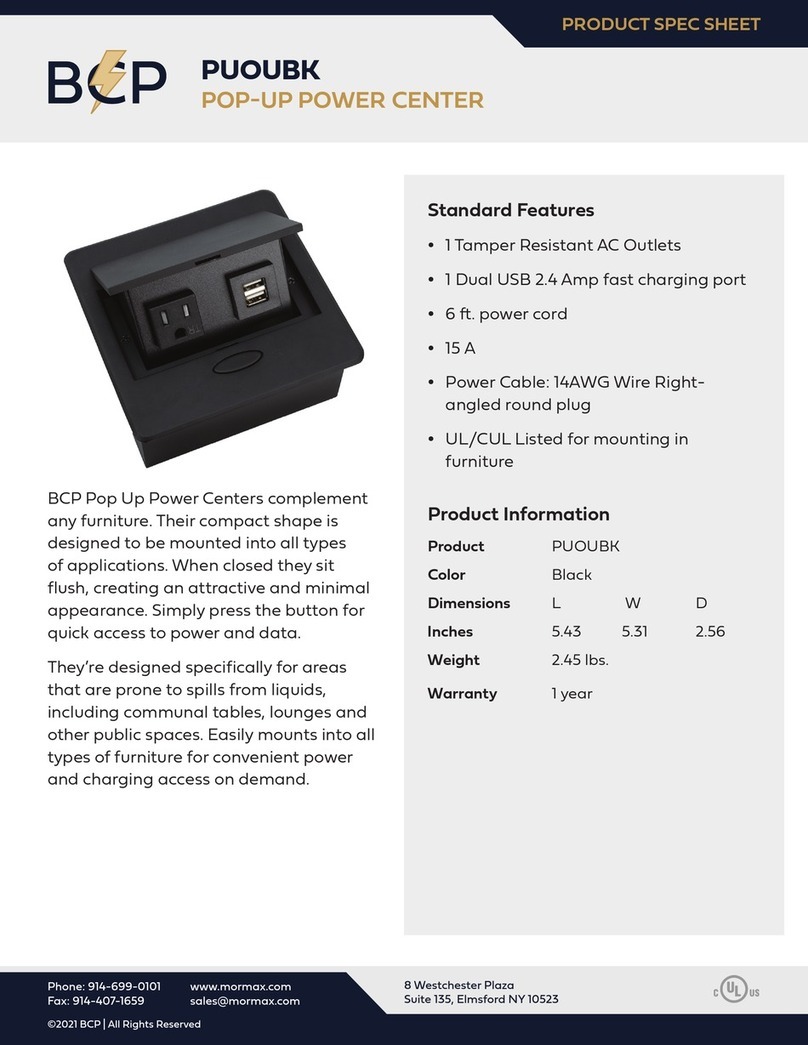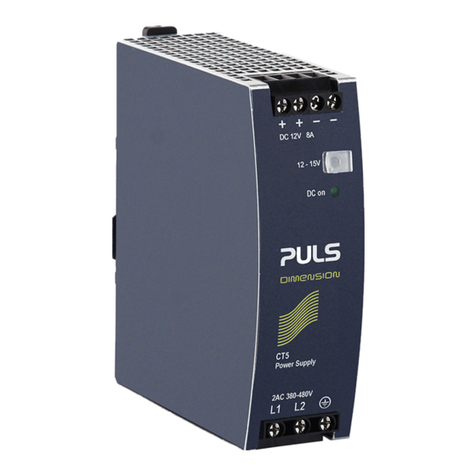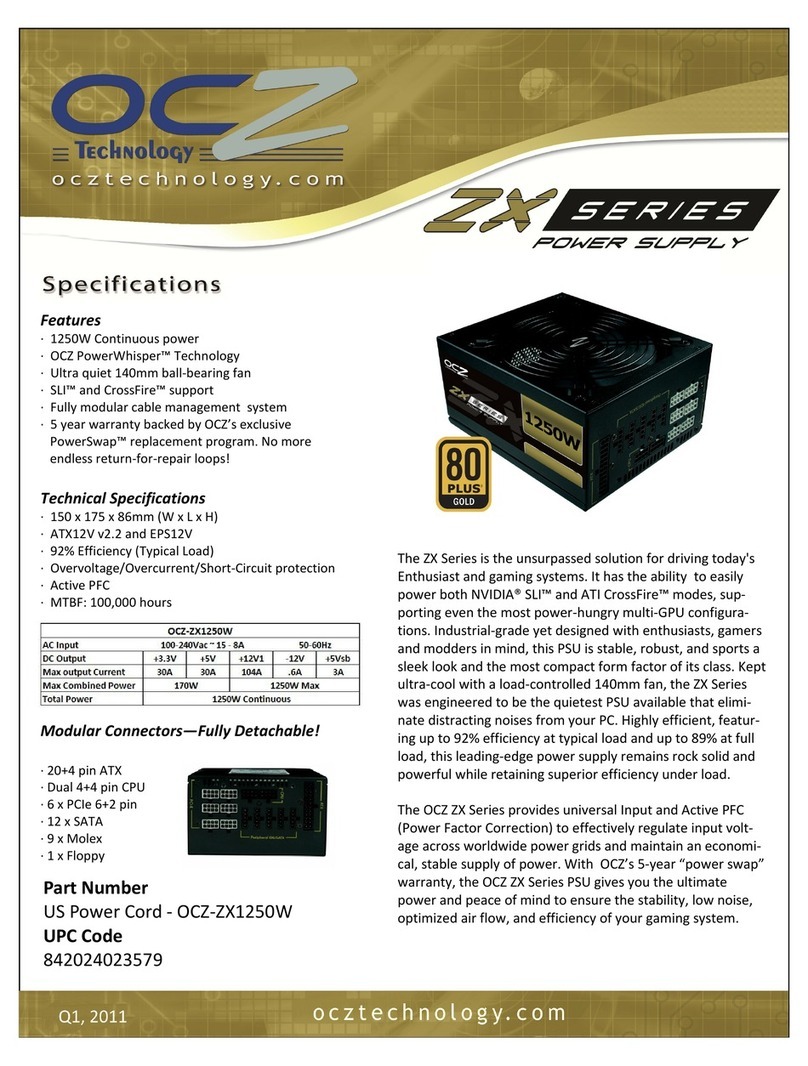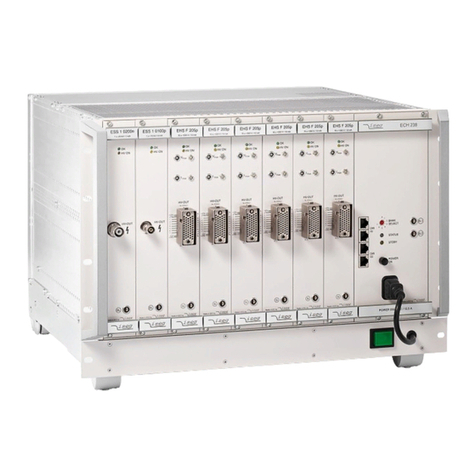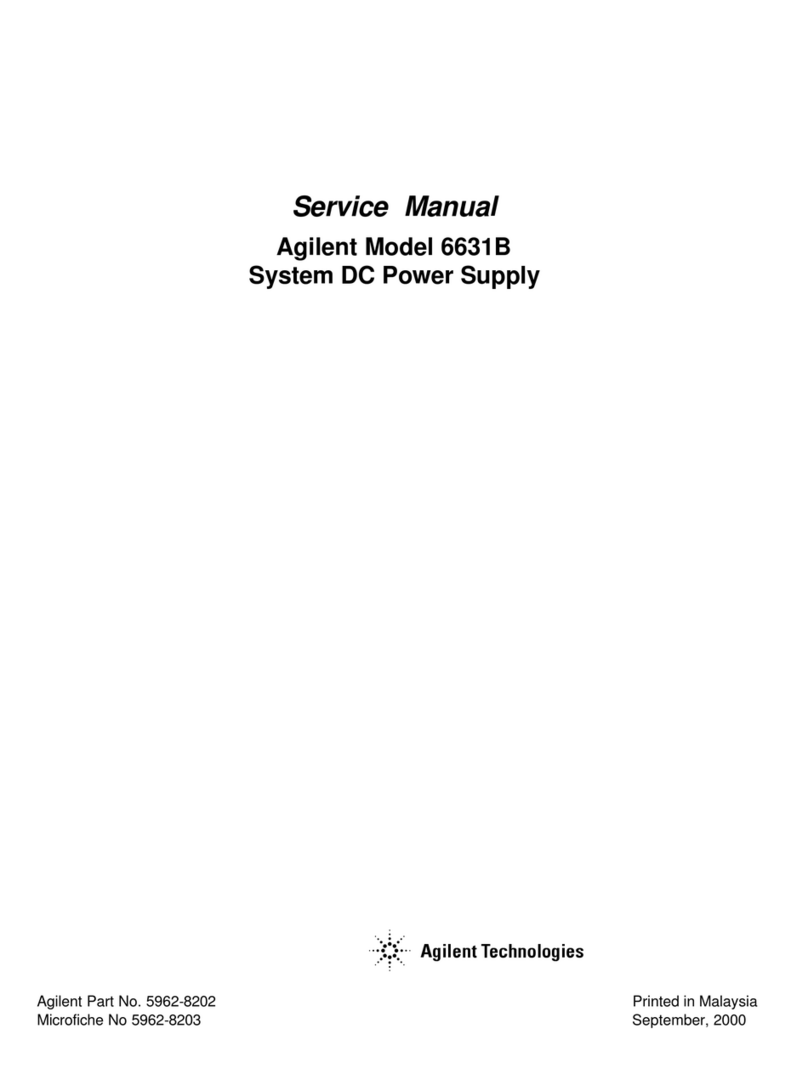7
3. INITIAL STEPS
a) Installation notes
The four mounting holes in the base plate of the PowerBox Royal SRS are fitted with rubber grom-
mets as standard. The Royal SRS should be mounted on a surface which is not subject to serious
vibration, using the retaining screws supplied in the set. Although all PowerBox products are de-
signed to be highly resistant to vibration, you should still avoid attaching the backer to thin GRP or
CFRP surfaces. Since the Royal SRS features an integral iGyro, particular care is called for here, i.e.
a rigid mounting surface.
The PowerBox Royal SRS can be installed in any orientation - provided that the case is at right-
angles to the fuselage centreline. In the iGyro menu or in the Basic Setup Assistant all you have
to do is define the unit’s installed orientation by moving the model. There is no need for the pilot to
think about axis designations such as X, Y and Z; instead the familiar terms ‘aileron’, ‘elevator’ and
‘rudder’ can be used. Since the integral iGyro incorporates accelerometers, the Royal SRS does not
need to be positioned at the model’s Centre of Gravity.
The internal card packaging can be used as a template for installing the SensorSwitch. The Sen-
sorSwitch should also be installed at a point where vibration is low. The GRP fuselage sides of a po-
wered model aircraft are not suitable for this, as they suffer from severe vibration. The appropriate
area should be stiffened with a piece of plywood 2 to 3 mm thick; 20 to 40 mm of wood round the
switch is generally sufficient to stiffen the GRP fuselage side. Gluing the plate to the GRP material
helps to absorb the vibration, and also provides plenty of “meat” for the switch retaining screws.
The Info Display should also be installed at a point where vibration is low – and ideally in a position
where it can be seen clearly. The Info Display does not need to be left permanently in the model, as
the Royal SRS also functions without the screen connected. The only point to note is that the Info
Display can only be plugged in gain when the main screen is displayed - not the menu. All you have
to do is ensure that it can be plugged into the main unit when you are using the system.
Connect the SensorSwitch, the Info Display and your batteries to the PowerBox. The Royal SRS
features unrestricted output mapping. This means that you can assign any function to any of the
output. For this reason you should not connect the servos until later – see point 3 d.
b) Switching the PowerBox on, the menu system
The method of switching on and off is very simple, and effectively prevents the system being swit-
ched on or off accidentally. This is the procedure: locate the SET button on the SensorSwitch and
hold it pressed in until the centre LED lights up red. Now press the two buttons I and II in turn: the
backer is now switched on. The procedure for switching off is exactly the same: hold the SET button
pressed in, wait until the centre LED lights up red, then switch off by pressing buttons I and II in turn.
Your PowerBox stores the last switched state. This means that the backer stays off if it is switched
off using the SensorSwitch. Once switched on, the unit can only be switched off again using the
SensorSwitch. Any intermittent contacts or interruptions in the power supply circuit cannot cause
the backer to be switched off.
The menu system for all PowerBox devices is as simple as possible, and generally self-explanatory:
- Hold the SET button pressed in for a few seconds to access the menu system.
- Use the SET button to select the menu point you wish to use.
- Buttons I and II are now used to move the cursor up or down, and to change values once a menu
point has been selected.
- Pressing the SET button again leaves the menu point.
